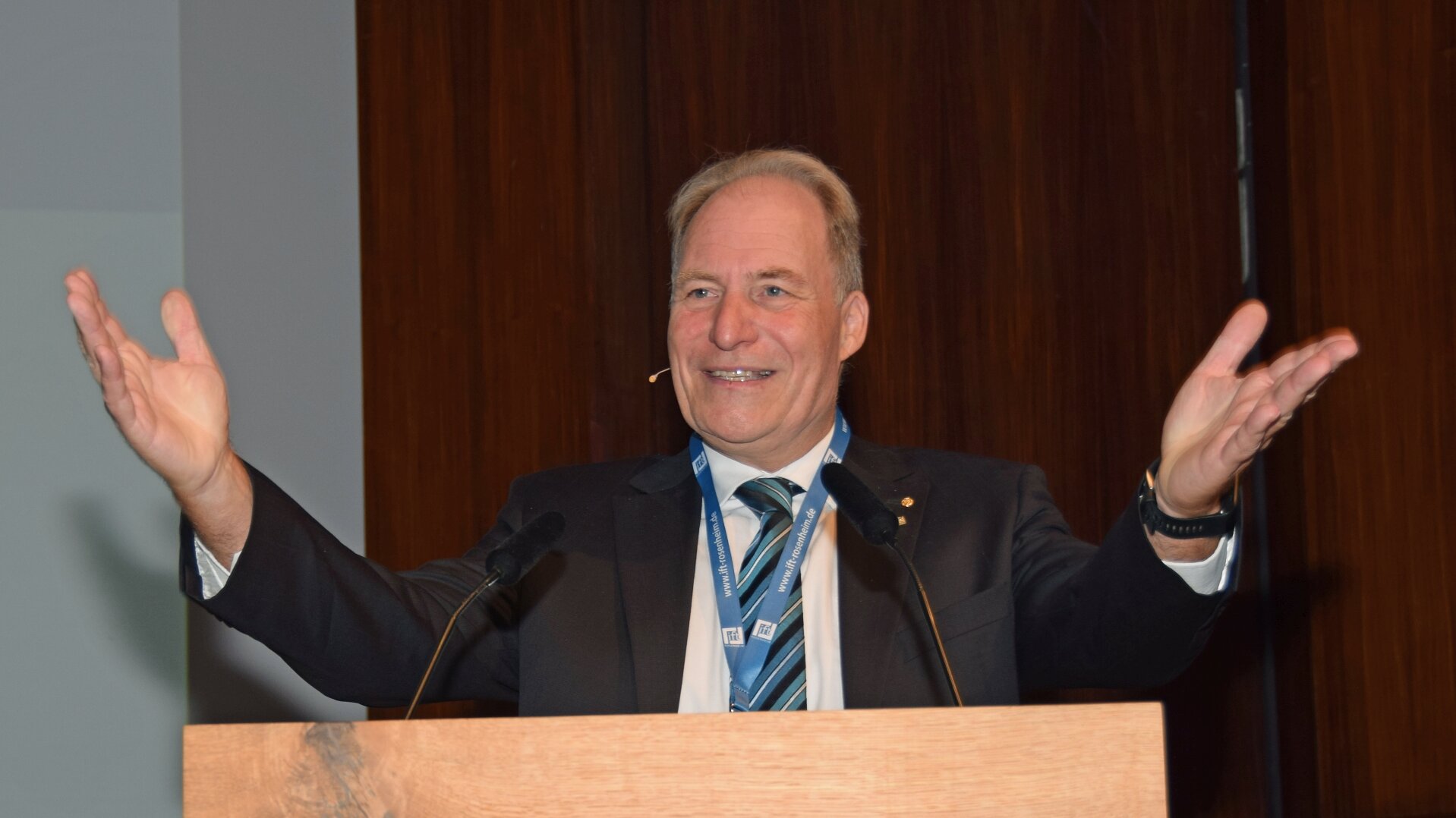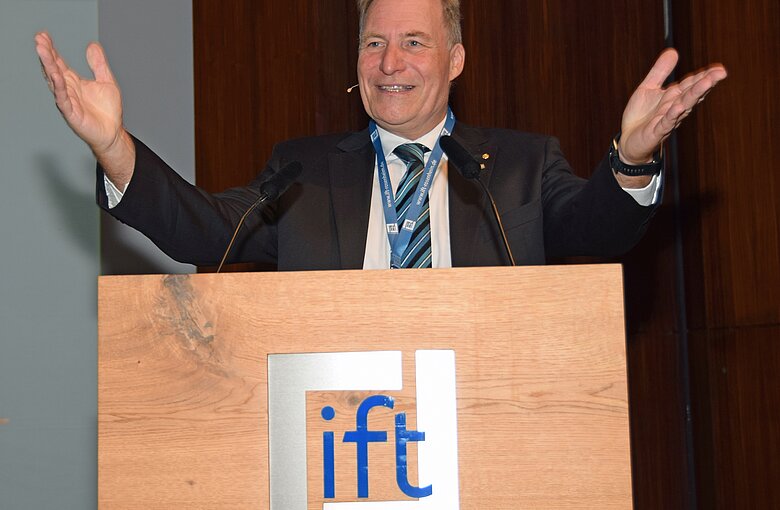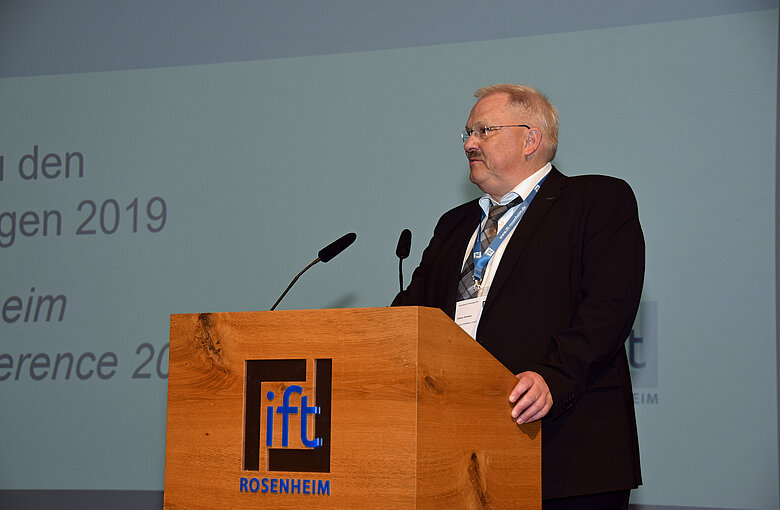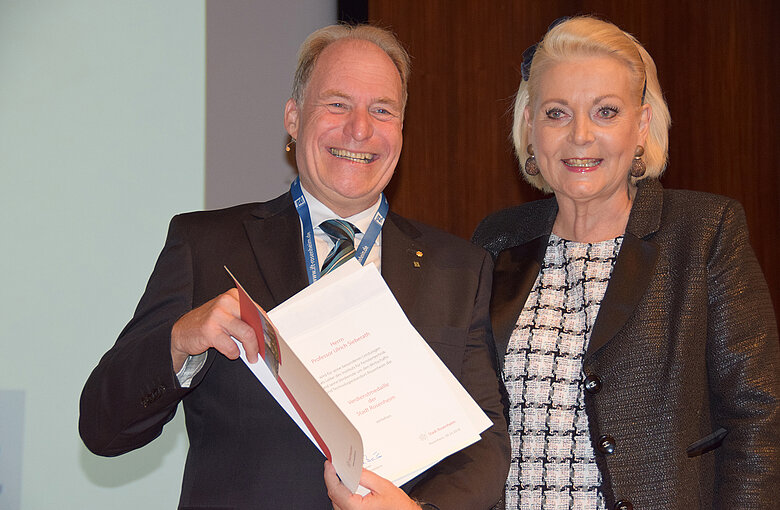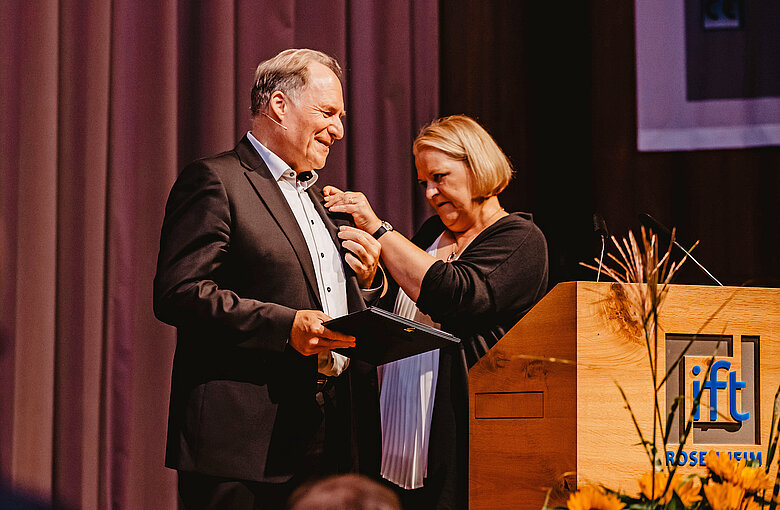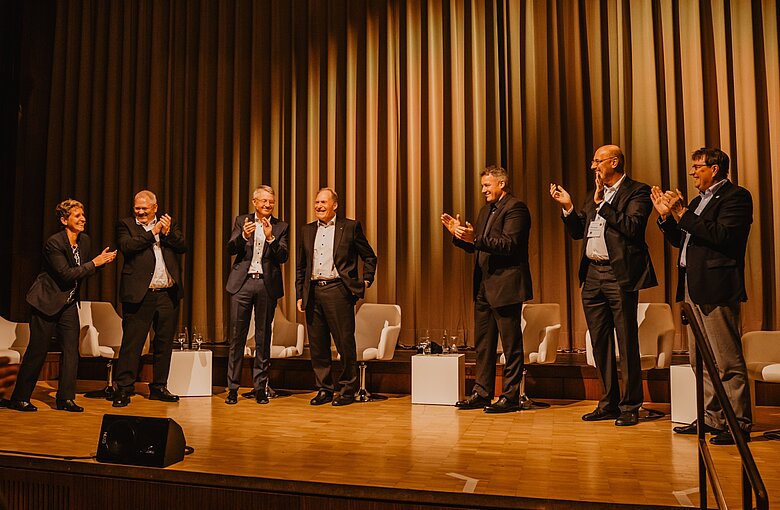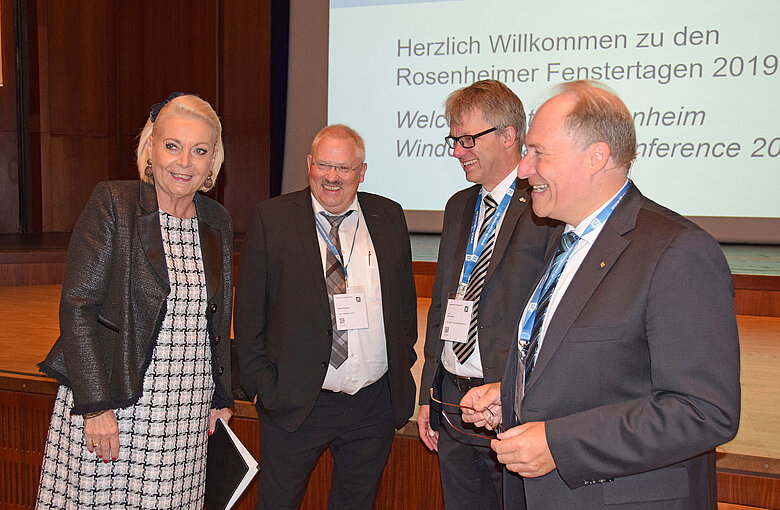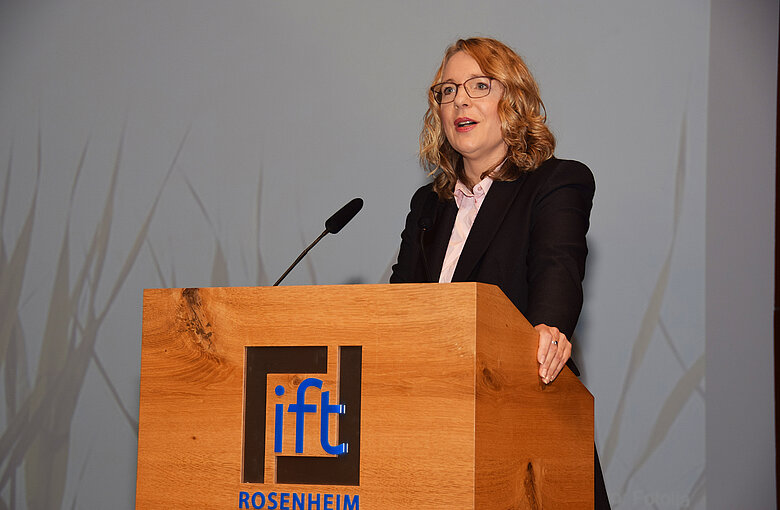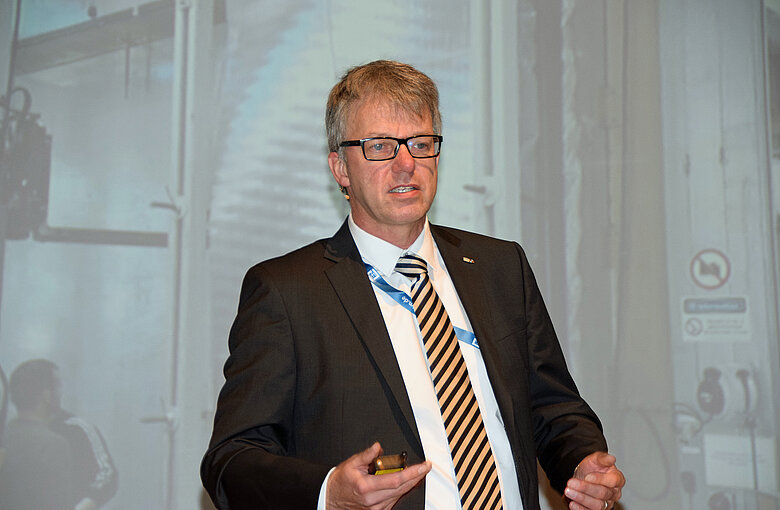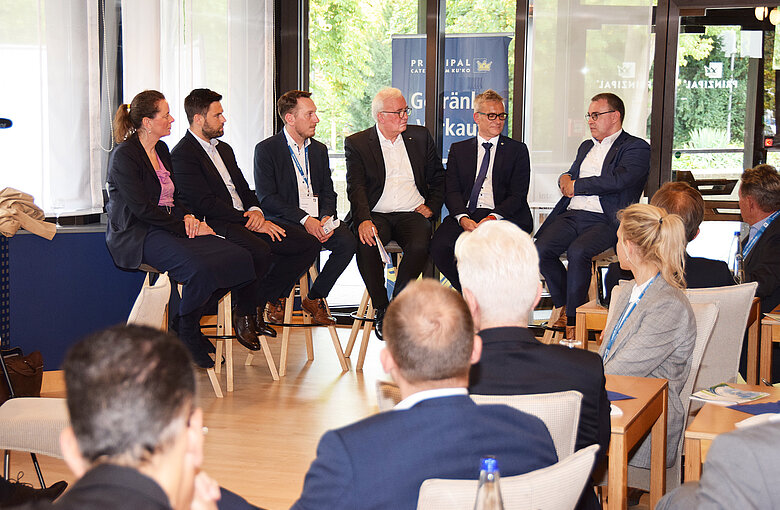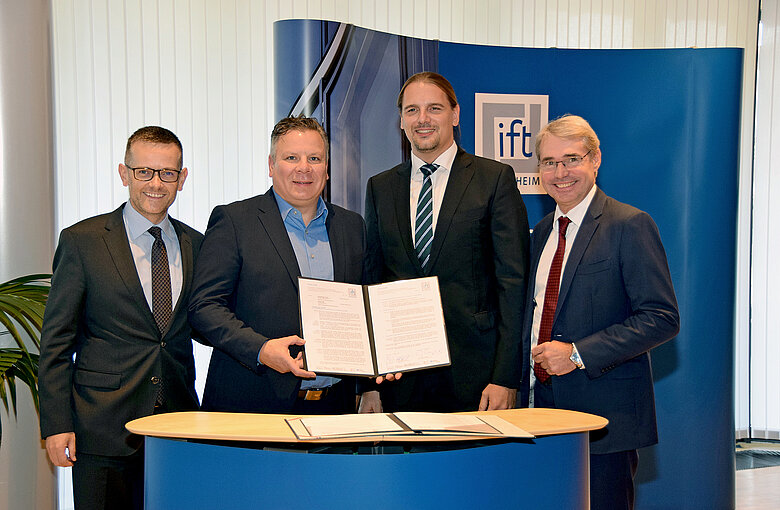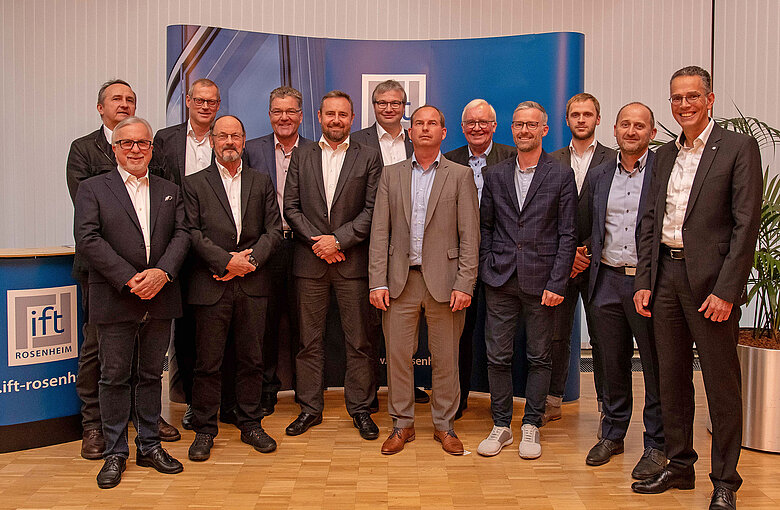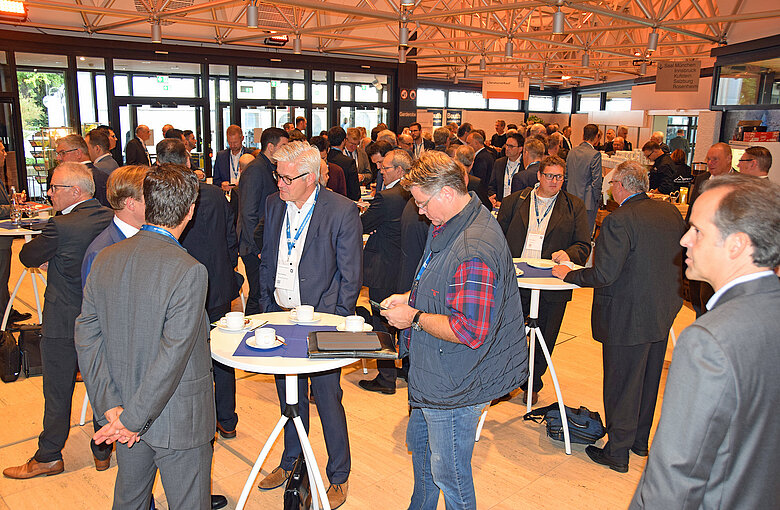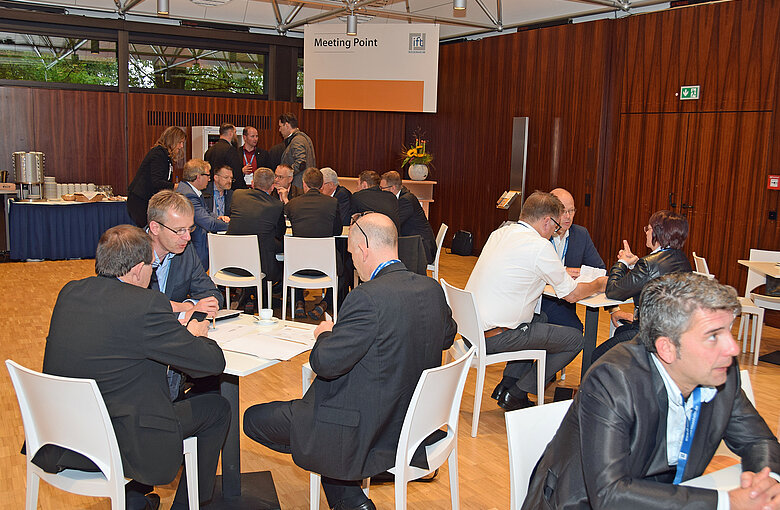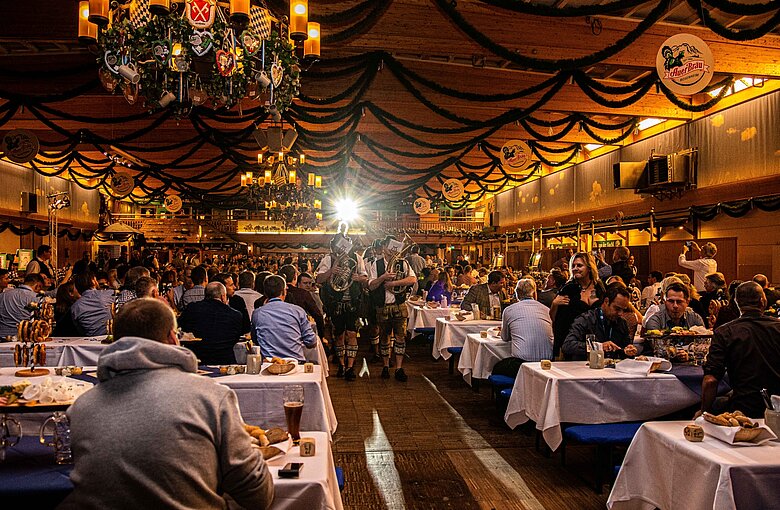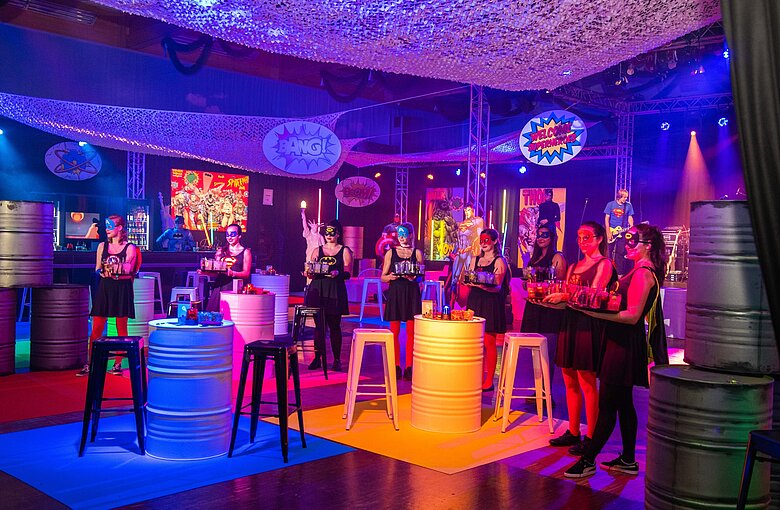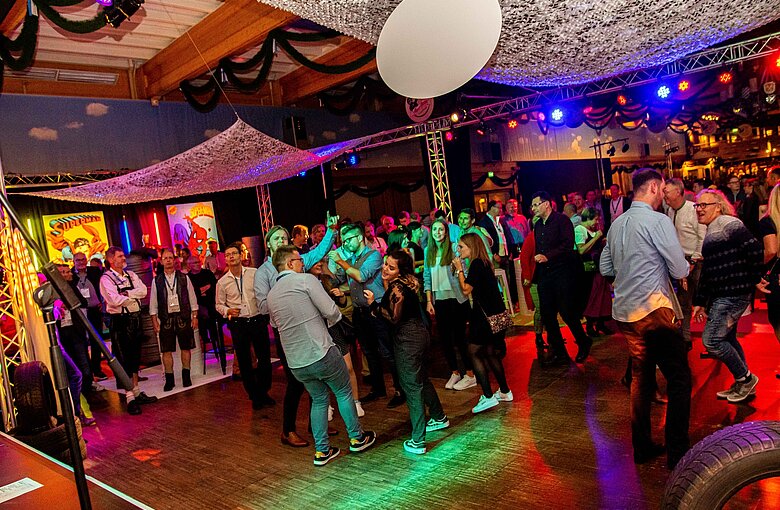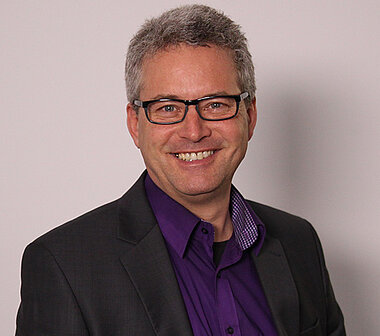Reading time: 15 minutes
Climate change makes the window industry a “double winner”
The motto "Windows for Future" was well chosen and attracted over 800 participants from 24 countries to the 47th Rosenheim Window and Façade Conference. Many presentations focused on climate change, as the effects of this key challenge affect the building sector in a special way. Prof. Dr. Claudia Kemfert (DIW) even described the window industry as a "double winner" because modern windows and facades contribute significantly to the reduction of CO2 emissions and help to make buildings fit for the burdens of climate change. In his lecture, Prof. Ulrich Sieberath, Director of Institute, described in detail what will happen to components in the future in the form of heat waves, floods, tornadoes or hailstorms. In addition, there were of course lectures on innovations in window and façade construction as well as practical information on installation, the use of safety glass, the planning of sun protection or the barrier-free design of windows and doors. Prof. Sieberath will retire at the end of 2019 and was honoured on Wednesday at a farewell event by 300 industry representatives with standing ovations for 37 successful years in the service of the industry. Astrid Wirges (CEO DIN) honoured him with the DIN badge of honor as the "father" of the product standard for windows and doors as well as for his great services in standardization work. In gratitude for the great services rendered to the development of the city and the region, the Lord Mayor of Rosenheim, Gabriele Bauer, presented Prof. Sieberath with the Medal of Merit of the City of Rosenheim.
For the last time, Prof. Ulrich Sieberath opened the Rosenheim Window and Façade Conference in his function as Director of Institute on Thursday, October 10th, as he will retire at the end of 2019. On Wednesday evening, 300 companions from the industry as well as from research, teaching and standardization had already honoured Prof. Sieberath with standing ovations. Astrid Wirges (CEO DIN) honoured him with the DIN badge of honor as the "father" of the product standard for windows and doors as well as for his great services in standardization work. Professor Sieberath has achieved enormous things in 37 years at ift Rosenheim, especially in the last 16 years as Director of Institute. Through his great expertise, his enthusiasm for technology and research and his inventiveness, but also through his commitment to standardization and other committees, he has had a lasting influence not only on the Institute, but also on the entire window and façade industry - in Germany, Europe and worldwide. From January 2020, his successor will be Prof. Jörn P. Lass, who has been active in the window and façade industry for over 30 years - 14 of these years in various management positions at ift Rosenheim and most recently 5 years at the Rosenheim University of Applied Sciences as head of the course of study "Building envelope".
After being welcomed by the new chairman of ift Rosenheim, Oskar Anders, the Lord Mayor of Rosenheim, Gabriele Bauer, reported that climate change also has a strong impact on the municipal level. Citizens, the city and the regional economy must invest in innovative energy-saving technology. In gratitude for the great services rendered to the development of the city and the region, the Lord Mayor Gabriele Bauer presented Prof. Sieberath with the Medal of Merit of the City of Rosenheim. In addition to the introductory lecture by Prof. Ulrich Sieberath, the lectures "Architecture from the 3D printer" (Moritz Mungenast, TU Munich together with Prof. Jörn P. Lass, Rosenheim University of Applied Sciences), "Energy turnaround in the building sector" (Dominik Rau, Prognos AG), "Climate change - Why doing nothing is expensive for us" (Prof. Dr. Claudia Kemfert, DIW), "Innovations in window and façade construction" (Prof. Dr. Winfried Heusler, Schüco and Prof. Christian Niemöller, SMNG) and "The European window market - winners and losers" (Martin Langen, B+L Marktdaten) set important accents for innovation and strategic orientation. Lectures on practical topics from technology and standardization offered valuable practical advice for the operative business, for example on "DIN EN 17037 - Daylight standard" (Dr. Jan de Boer, IBP), “Fall protection windows with opening restrictors" (Manuel Demel, ift), "DIN 18008 current" (Frank Lange, VFF and Jochen Grönegräs, Bundesverband Flachglas (Federal Flat Glass Association)) or "The (R)evolution in window installation" (Wolfgang Jehl, ift). The successful festive evening with a colourful mix of Bavarian customs and the theme party "Superheroes" also contributed to the success of the 47th Rosenheim Window and Façade Conference. In the following there are details to some lectures.
In his opening lecture "Windows for Future" Prof. Sieberath showed which technical, social and political trends will influence the window industry among other things:
1. The continuing demand for social housing and small-scale buildings in redensification requires multifunctional windows with higher noise protection.
2. The increasing shortage of specialists and building materials forces flexible solutions, for example simplification of systems and assembly, as well as training concepts for non-skilled workers and immigrants.
3. The consequences of climate change with heat waves, floods, tornadoes or hailstorms require new constructions and materials. In particular, the focus is increasingly on summer thermal insulation and the use of controlled windows.
The measures now decided in the climate law of the Federal Government will not be sufficient to save 45 million tons of CO2 in the building sector by 2030. It is therefore to be expected that after the Bundestag elections in 2021 the requirements will be tightened up and tax depreciation improved so that billions in payments to the EU can be avoided because of failed climate targets. In the technical field, the use of vacuum insulating glazing and the intelligent control of sun protection and windows will increase. Catastrophes with heavy rain and flooding are almost normal. But the fact that heat waves lead to the deformation and destruction of building elements with dark colours, or windows for dust storms are so far only conditionally suitable, is new for many. The resulting requirements can best be met with flexible, modular and adaptive systems. The new digital production methods also help to counter the growing complexity of windows in planning and execution. This is easier for larger companies - small and medium-sized enterprises have to organise themselves in networks. The process of window installation can be simplified and improved in quality by means of assembly door frames. This was also seen from 52 % of the participants in the questionary.
Prof. Claudia Kemfert (DIW, Berlin) opened her lecture "Climate change: Why doing nothing is expensive for us" with the urgent message "The temperature increase is coming faster than scientists expected". After this dramatic information, she began to present the consequences step by step in three dimensions: damage, adjustments and structural changes. Health is threatened by heat waves, storms, floods and new diseases that otherwise only occur in warmer regions. Agriculture and forestry are struggling with reduced crop yields, decreasing yield security due to increased climate variability, the risk of forest fires and increased susceptibility of tree species that are not suited to their location. Biodiversity is at risk through the reduction of species diversity. The energy industry is also affected by a lack of cooling at low tide or damage to the electricity grids by ice and storms. All this leads to exponentially rising costs for repairs, insurance losses or financial crises due to speculation. These costs are many times higher than the climate protection measures and rise exponentially from 1.5 °C onwards. At 5 °C, depending on the calculation method, these amount to between approx. 9 % (Kemfert) and approx. 14 % (Stern) of the global gross domestic product (GDP). With a GDP of about 84.7 trillion US dollars (IMF) that would be between 7.6 and 11.9 trillion US dollars per year. This is significantly higher than the German GDP of approx. 4 trillion US dollars. In return, 1 to 3 % of the GDP could be used for effective climate protection, which would ensure a limitation of the temperature increase to 1.5 °C. At the same time, the German economy could benefit, as technologies for renewable energy generation and increased efficiency are the future "export hits". "Climate protection is affordable and creates economic opportunities," says Kemfert. This also applies to German window and façade technology, which is world leading and was described by Mrs. Kemfert as a "double winner". Modern construction elements can reduce the CO2 emissions of buildings and at the same time protect them from the consequences. But with every year of political hesitation and waiting, these opportunities are squandered. "Germany has a modernisation backlog and needs a more ecological economic policy," says Kemfert. This must also be done more strongly in the building sector, for example by increasing the building refurbishment through tax incentives or incentive programmes for more photovoltaics on German roofs. But courageous entrepreneurs can already become active and be successful.
Dominik Rau (Prognos AG) gave the second important lecture on climate change with the title "Energy Turnaround in the Building Sector - Influence of European Regulations on Future German Measures". In general, the fight against climate change is based on the two pillars of "energy efficiency" and "renewable energy generation". Rau made it very clear that the current measures were not sufficient. Even the measures decided in Paris lead to a temperature increase of 3.5 °C; the measures just decided in Germany are still clearly behind the Paris targets. Although renewable energy generation is on a positive path, the building sector is lagging far behind, as the renovation rate and the expansion of photovoltaics are stagnating. Nor does the planned Building Energy Act contain any further increase in energy requirements. "However, buildings would already have to meet the KfW standard 40 for new construction and refurbishment in order to achieve the planned average energy consumption of 50 kWh/(m²a) by 2050." What is insufficiently renovated today will be "cemented" for the next 30 years, because the renovation cycle for the building substance is around 40 to 50 years. In addition, EU member states are obliged to improve cumulative final energy savings by 0.8 % annually between 2021 and 2030. "Due to imminent penalties from Germany in the billions, the requirements will increase", Rau said. An increase in energy costs would also improve the cost-effectiveness of thermal insulation measures. In concrete terms, Rau recommends significantly higher CO2 prices, higher requirements for existing and new buildings, operating bans initially for oil and later also for gas heating, more incentives for tradesmen to make greater use of renewable heat generators and a simplified production landscape.
In his lecture "New European Daylight Standard DIN EN 17037 - Do window surfaces have to be enlarged?”, Dr. Jan de Boer (IBP) presented the effects on windows, facades and sun protection systems. In Germany, the standard replaces the previous DIN 5034 and is a good planning tool. It supports building planners, but also window manufacturers, so that rooms are supplied with daylight as well and as long as possible (daylight autonomy). The standard contains a simplified calculation method for illuminance using daylight quotients on the reference plane and a procedure using climate data for the given location. Good lighting is achieved when 50 % of the room is illuminated with the target illuminance ET in 50 % of the daylight hours (4,380 h). The minimum illuminance ETM is 95 % of the room at 50 % of daylight hours.
The recommendations are made in four evaluation stages. For daylight openings (windows, glass, etc.) in vertical and inclined surfaces there is a classification of the target illuminance ET in low (300 lx), medium (500 lx) and high (750 lx). For the minimum illuminance ETM these are analogue 100/300/500 Lux. The proof is given by a variable daylight quotient DT, which depends on the climate and the geographical latitude. The target illuminance is set in relation to the mean diffuse illuminance in outdoor areas (Ev,d,med). In Germany this is 13,900 lx. For the "low" level, this is 2.2 % (DT=ET/Ev,d,med= 300lx/13900lx).
In comparison, the recommendations exceed the minimum requirements of the previous DIN 5034. As an effect on window areas, it can be seen that a good rating tends to only be achieved with larger window areas, and that the minimum requirements are often more difficult to meet.
In addition to illuminance (lux, lx), parameters such as view, solar radiation and glare protection are also included in the evaluation. The view depends on the neighbouring buildings and the viewing angle (window size) and should contain at least the landscape level. In the "high" level, the sky and ground should also be visible. The solar radiation depends on the position of the sun, the reference plane and the buildings, and at low sun levels it is classified as follows: low (1.5 h), medium (3.0 h) and high (4.0 h). An influence is possible by the building geometry, overhangs or the window reveal. The window size is not included in the evaluation. The parameter for glare is the daylight glare probability (DGP), which can be determined with simulation programs. The recommendations are low (0.45), medium (0.40) and high (0.35). There is a simplified procedure that assigns a flat-rate value of 0.35 to DGP for lockable external sun protection (blinds, slatted shutters, roller shutters, etc.). DIN EN 17037 underlines the need for glare protection, as special glazing is generally not sufficient. As a first introduction to daylight planning, the free guide is helpful. Download at www.initiative-tageslicht.de
Two other current and hotly debated security issues were the use of opening restrictors for windows with fall protection and the use of safety glass (TSG and LSG) in accordance with DIN 18008.
Manuel Demel (ift) presented a practical ift test method for opening restrictors in his lecture "Evaluation of fall protection windows with opening restrictors". Safety barrier windows are generally coming increasingly into the focus of the construction supervision; opening restrictors in this field of application are an unregulated building product. The difference arises when the opening restrictor becomes a safety component from a "comfort component" according to EN 13126-8, which is intended to prevent a fall by limiting the opening width. For this reason, the overall system consisting of hardware, position in the window and screw connection must be considered. The ift test method includes a pendulum impact test with the dual tyre impactor (50 kg, drop height 900 mm), a durability test (20,000 cycles with 350 N tensile force and a reference velocity v = 0.5 m/s) and the exclusion of intentional disassembly by the user (manipulation as a manual attack using small tools, similar to the burglary attempt). The test method thus offers the window manufacturer, who is ultimately responsible and liable for safety, safety in the application of the building supervisory authorities and with approvals of individual cases.
Frank Lange (VFF) and Jochen Grönegräs (Bundesverband Flachglas (Federal Flat Glass Association)) gave recommendations on the requirements for the use of safety glass according to the glass standard DIN 18008, how the blurred statements of the standard should be interpreted. This refers to the paragraph "5.1.4 If protective measures for glazing are required due to legal road safety requirements, this can be achieved, for example, by restricting accessibility (safety fence) or using glass with safe fracture characteristics. Reference is made to Section 37, Paragraph (2) of the Prototype Building Regulation or the corresponding implementation in state law." § 37, Paragraph (2) of Prototype Building Regulation demands: "Glass doors and other glass surfaces reaching down to the floor of generally accessible traffic areas shall be marked in such a way that they can be easily recognised. Further protective measures shall be provided for larger areas of glass when required by road safety."
Safe fracture characteristics are clearly regulated and possible with TSG according to DIN EN 12150-2 and DIN EN 14179-2, LSG according to DIN EN 14449 or glass, proven by testing according to DIN EN 12600. The core question is the interpretation of the term road safety. There is no dispute about the application scenarios in which special building regulations or guidelines make clear specifications, for example for school buildings or workplaces. Critical, however, is the large area of residential construction. Irrespective of § 37 Prototype Building Regulation, every operator of a building construction also has a general duty to ensure road safety (liability according to § 823 German Civil Code). The aim must be to prevent serious injury from glass breakage, whether the glass is in public or private areas.
The result is a recommendation for use issued by the Bundesverband Flachglas (Federal Flat Glass Association), the German association of window and facade manufacturers (VFF), the Carpenters' Association and the Federal Association of Metalworkers. The document shows one way in which road safety can be objectively assessed for glass surfaces and achieved by applying protective measures. This can support the coordination of desired protective measures with the client for the unregulated public and private sector. The core of the paper is a risk assessment guide, which must be agreed with the planner or building owners. Because the decision for or against the voluntary use of safety glass ultimately lies with the building owner.
Information on all other speakers and lectures can be found at www.fenstertage.de
Atmospheric and speaker pictures can be found at
www.ift-rosenheim.de/bildarchiv/events
